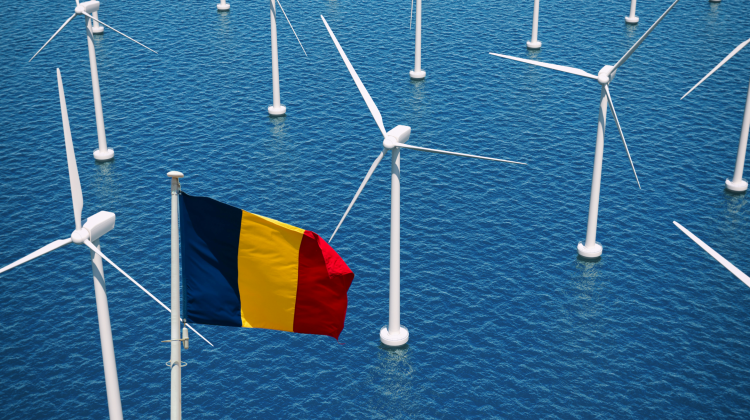Romania is taking a decisive step to harness its offshore wind potential in the Black Sea. The Ministry of Energy has issued a call for the preparation of a technical study to delimit maritime zones that can be offered for concession for offshore wind projects, in line with the recently adopted Law 121/2024.
The Government’s objective is clear: to install 3 GW of offshore wind capacity by 2035, as part of its Energy Strategy 2025–2035, with a long-term outlook to 2050. This target is the first milestone in exploiting a resource that, according to World Bank estimates, could reach up to 76 GW of installed capacity.
The Ministry’s announcement highlights the preparation of the study as a crucial preliminary phase to advance future concession mechanisms and attract investment. It emphasizes that offshore activities—from exploration to decommissioning—require significant capital and inter-institutional coordination. Therefore, a clear technical and regulatory framework is essential.
It is worth noting that national elections were held last Sunday, resulting in the election of Nicușor Dan as president. While the energy sector awaits further announcements, experts suggest that his victory could bring greater certainty and positive signals to the renewable energy market.
Strategic delimitation to reduce risks and improve project viability
The requested study aims to identify and propose maritime areas with at least 800 MW of individual potential, suitable for the construction and operation of offshore wind farms. The official document outlines a broad set of technical and strategic analyses, including:
-
Wind resource assessment, using meteorological and climate data, as well as modeling, to pinpoint areas with the highest production potential.
-
Geotechnical and bathymetric studies to evaluate the feasibility of fixed or floating foundations.
-
Environmental and biodiversity analysis, identifying protected zones, sensitive ecosystems, and associated restrictions.
-
Grid connection feasibility, mapping evacuation points and assessing the capacity of the National Energy System (SEN) to absorb new generation.
-
Identification of existing maritime uses, such as shipping lanes, fishing zones, national security areas, hydrocarbons, or other restricted regions, to avoid overlapping interests.
The Ministry emphasizes that the study must follow a transparent methodology, based on existing data and aligned with international standards such as the Global Wind Atlas and IEC guidelines. Additionally, it should include consultations with social, environmental, and technical stakeholders to validate the proposed findings.
A renewed regulatory framework and an ambitious target
With the adoption of Law 121/2024, Romania now has, for the first time, a dedicated legal framework for offshore wind development. This legislation also fulfills Milestone 116 of the National Recovery and Resilience Plan (NRRP), which ties energy transition goals to access to European funding.
The Ministry of Energy acts as the concession-granting authority, leading inter-institutional coordination with bodies such as ANRE, ACROPO, and MMAP.
“The study will provide the technical and strategic foundation for the Government to decide which areas will be tendered in the future,” the announcement states. It also clarifies that participation in this phase does not limit eligibility for future tenders, which will follow formal public procurement processes.
European comparison: a favorable context
The regional context is also promising. According to sector data, Europe is expected to reach 4.5 GW of offshore wind capacity by 2025, with mature markets like the United Kingdom, Germany, and the Netherlands leading developments. In this landscape, the Black Sea is emerging as the next strategic frontier for offshore wind growth, especially in countries like Romania, Bulgaria, and Turkey.
Romania aims to position itself as a key player in this new phase, combining abundant natural resources with regulatory momentum and access to European financing. The Government also encourages the formation of consortia between domestic and international firms to ensure both knowledge transfer and local adaptation.
Next steps
Expressions of interest to conduct the study must be submitted to the Ministry by June 10, 2025. Once proposals are evaluated, the Ministry will define the selection mechanism for awarding the service. The study phase is exploratory and non-binding, laying the foundation for future competitive tenders.
“Through this joint effort, we aim to take a decisive step toward harnessing the Black Sea’s renewable energy potential,” concludes the Ministry of Energy.































